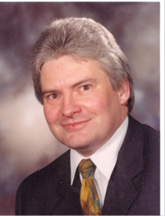Dielectric material characterization in the GHz range
Prof. Uwe Pliquett
Institut für Bioprozess- und Analysenmesstechnik e.V., Heiligenstadt, Germany
The electromagnetic spectrum, from low-frequency earth waves to cosmic radiation, has areas in which materials exhibit characteristic behavior. Impedance spectroscopy up to the upper MHz range can mainly detect conductivity phenomena and ionic polarization, while in the optical range (> 100 THz) electronic polarization plays a key role. In the range of a few GHz there is a strong interaction with permanent but also induced dipoles, whereby water and functional groups of biologically important molecules in particular contribute to polarization. It will be shown which material properties can be assessed by dielectric measurements in the GHz range and how these can be used for practical applications such as quality control or process sensors. The basics of measurement technology will be explained, both in the frequency and time domain, and the scattering parameters (S-parameter) are introduced as the primary measurement variable. Current developments are presented using examples, both on the device and application side.
Short biography:
 Uwe Pliquett received the diploma degree in electronic instrumentation and the Dr.-Ing. degree in measurement techniques in 1988 and 1991, respectively, from the Engineering College Mittweida, Germany. From 1993 to 1996 he was postdoctoral fellow at MIT, Cambridge, MA, working on transdermal drug delivery mediated by pulsed electric field. He continued the work on electroporation and bio-impedance measurements in Bielefeld where he received the habilitation in 2000. During 2005 he worked at Old Dominion University in Norfolk, VA, for investigation of changes in biological material due to the application of pulsed electric field. In 2006 he joined the Institut für Bioprozess- und Analysenmesstechnik, Heilbad Heiligenstadt, Germany, where he is currently working on characterization and manipulation of biological material using electrical and optical methods.
Uwe Pliquett received the diploma degree in electronic instrumentation and the Dr.-Ing. degree in measurement techniques in 1988 and 1991, respectively, from the Engineering College Mittweida, Germany. From 1993 to 1996 he was postdoctoral fellow at MIT, Cambridge, MA, working on transdermal drug delivery mediated by pulsed electric field. He continued the work on electroporation and bio-impedance measurements in Bielefeld where he received the habilitation in 2000. During 2005 he worked at Old Dominion University in Norfolk, VA, for investigation of changes in biological material due to the application of pulsed electric field. In 2006 he joined the Institut für Bioprozess- und Analysenmesstechnik, Heilbad Heiligenstadt, Germany, where he is currently working on characterization and manipulation of biological material using electrical and optical methods.

